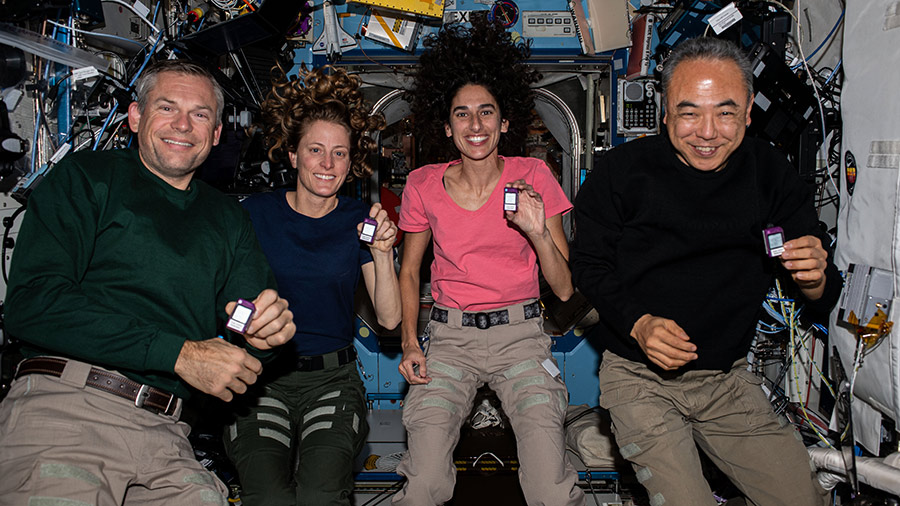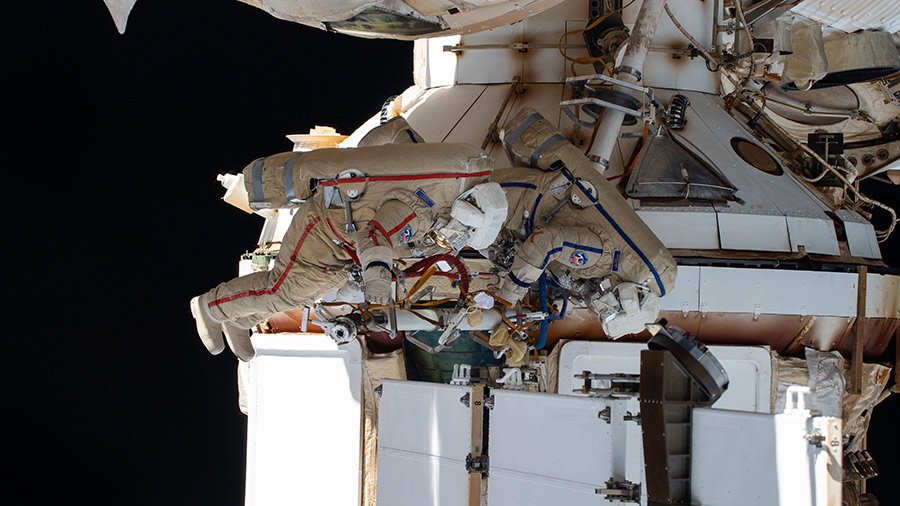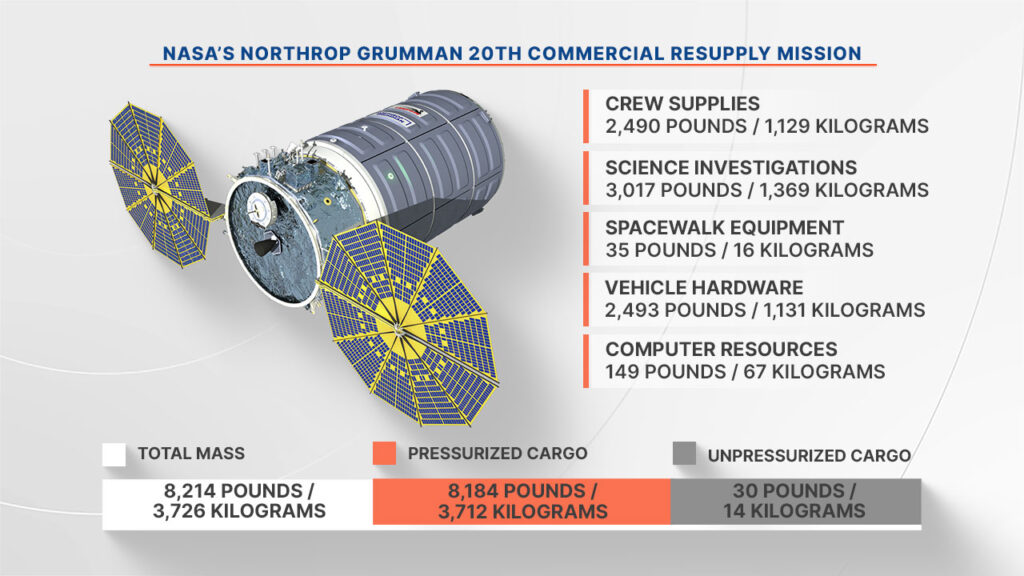
Four Expedition 70 astronauts had a light-duty day on Tuesday fitting in biology research and robotics during the afternoon. The International Space Station’s three cosmonauts continued focusing on an upcoming spacewalk while also working on their own slate of research and robotics.
NASA astronauts Loral O’Hara and Jasmin Moghbeli partnered together for a couple of hours on cardiac research for the CIPHER study. Moghbeli operated the Ultrasound 2 device with support from ground doctors and scanned O’Hara’s chest to assess cardiovascular risks in microgravity. CIPHER is comprised of 14 studies exploring a range of psychological and physiological conditions astronauts may experience during long-term space missions. The duo also took turns unpacking cargo and loading trash inside Northrop Grumman’s Cygnus resupply ship.
Read more about how the broad suite of experiments, known as CIPHER, or Complement of Integrated Protocols for Human Exploration Research, is helping researchers understand how living and working in space affects the human body.
Commander Andreas Mogensen from ESA (European Space Agency) set up a digital camera in the cupola for the Earthshine experiment and photographed the Moon to image sunshine reflected from the Earth. Flight Engineer Satoshi Furukawa checked the performance of a spherical robot camera that can operate remotely or autonomously inside the Kibo laboratory module.
O’Hara and Mogensen had been planning to conduct a spacewalk this month to collect samples and examine the possibility of microbes living on the outside of the orbital laboratory. However, mission managers have decided to defer that spacewalk to no earlier than December as they review data from a backup radiator leak that has since ceased.
In the meantime, two other spacewalks are still on the schedule for October. Two cosmonauts from Roscosmos are gearing up for a spacewalk planned for Oct. 25. The duo is scheduled to exit the Poisk airlock at 2:30 p.m. EDT and spend about six hours and 45 minutes on external Roscosmos maintenance tasks. Flight Engineers Oleg Kononenko and Nikolai Chub worked throughout Tuesday testing their Orlan spacesuits’ life support and communications components.
Kononenko also configured Poisk to support next week’s spacewalk activities. Chub began and ended his day studying how weightlessness affects the heart and exploring how international crews and mission controllers can communicate more effectively.
Roscosmos Flight Engineer Konstantin Borisov assisted Chub with the heart study during the morning. Borisov would then spend the rest of the day testing operations with the European robotic arm attached to the outside of the Nauka science module.
The next NASA spacewalk will see Moghbeli and O’Hara set their spacesuits to battery power at 8:05 a.m. on Oct. 30 signifying the start of their first excursion together. The duo will spend about six-and-a-half hours removing electronics gear and replacing solar array hardware on the outside of the station.
NASA and SpaceX now are targeting no earlier than 10:01 p.m. EST Sunday, Nov. 5, for the launch of the company’s 29th commercial resupply services mission to the International Space Station. The date shift takes into account required time for teams to complete pad readiness after the agency’s Psyche launch on SpaceX’s Falcon Heavy rocket, which lifted off on October 13 from Launch Complex 39A at NASA’s Kennedy Space Center.
Learn more about station activities by following the space station blog, @space_station and @ISS_Research on X, as well as the ISS Facebook and ISS Instagram accounts.
Get weekly video highlights at: https://roundupreads.jsc.nasa.gov/videoupdate/
Get the latest from NASA delivered every week. Subscribe here: www.nasa.gov/subscribe




